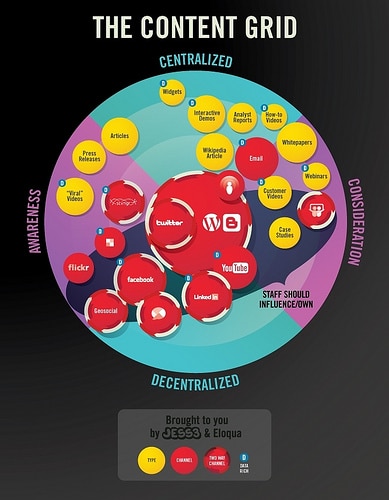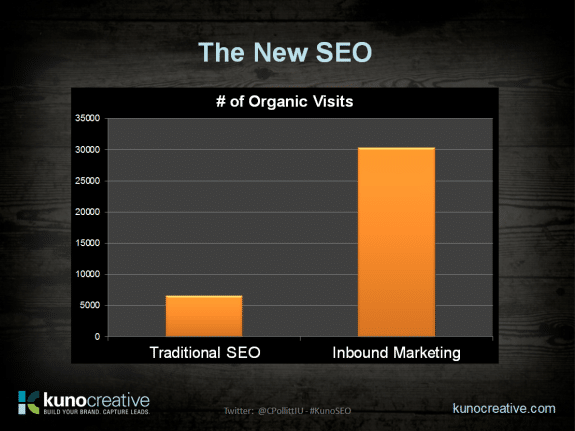 Although the words are clear, many people have not encountered the term “Content Marketing”. Given that it’s the hottest thing in marketing this side of Pinterest, it’s worth spending some time talking about what exactly is meant by Content Marketing, and how does it differ from traditional marketing using white papers, brochures, webinars and other traditional forms of content.
Although the words are clear, many people have not encountered the term “Content Marketing”. Given that it’s the hottest thing in marketing this side of Pinterest, it’s worth spending some time talking about what exactly is meant by Content Marketing, and how does it differ from traditional marketing using white papers, brochures, webinars and other traditional forms of content.
Content Marketing starts with a leap of faith: that if you create and give something away that your audience finds valuable, they will reward you with their trust, and eventually with their dollars. Marketing using traditional white papers, which are generally thinly disguised product pitches, is not Content Marketing. The objective of white papers is generally to sell more products; the objective of content used for Content Marketing is to educate and engage your audience. To be more specific, for business to consumer (B2C) products, content marketing aims to generate positive feelings and engagement with the brand, often through entertainment; for business to business (B2B) products, content marketing establishes trust, so that your product is more likely to be part of the consideration set, and to educate the buyer about some of the criteria for selecting a product in your market.
Content Marketing can take many forms: articles, newsletters, eBooks, blog posts, podcasts, videos, webinars, events, applications, games, Facebook posts, curated content and can be delivered through many channels: Facebook, Twitter, LinkedIn, Blogs, syndication, YouTube, SlideShare, Pinterest, iTunes app store. According to the 2012 B2B Content Marketing Benchmarks, Budgets and Trends report published by the Content Marketing Institute and MarketingProfs, content marketers employ eight different content marketing tactics, on average, to achieve their goals.
Today, Content Marketing consumes about one-fourth of marketing budgets, but these numbers are increasing. Some companies, like Coca-Cola, P&G, GE, Hubspot, Red Bull, Kate Spade, Gilt Group and Unilever have made major commitments to content marketing, increasing their spend dramatically. One of the reasons for this is that content marketing is more effective than traditional SEO in driving traffic to your web site. Check out this graph from business2community.com (by the way, inbound marketing is another name for content marketing):
In my next post, I’ll take a look at some best practices for generating content for Content Marketing.




Wow, you were able to avoid mentioning “Content is king”! Just kidding.
You mentioned that content marketing and inbound marketing are roughly the same. What do you think of calling it “attraction marketing”? Idea being that it provides (when done right) something of value that “attracts” someone interested in the content (information, entertainment, etc) as opposed to, for instance, an advertisement which is in someone’s face whether they happen to care about it or not. Thoughts?
Richard, thanks for the comment. Yeah, I managed to resist the “Content is king” analogy – I swear I see it in about half of the articles about content marketing.
Attraction marketing, in opposition to traditional “interruption marketing”? Yeah, that works for me. I think the key thing is providing value, whether it be information, entertainment or whatever.
Wow, you were able to avoid mentioning “Content is king”! Just kidding.
You mentioned that content marketing and inbound marketing are roughly the same. What do you think of calling it “attraction marketing”? Idea being that it provides (when done right) something of value that “attracts” someone interested in the content (information, entertainment, etc) as opposed to, for instance, an advertisement which is in someone’s face whether they happen to care about it or not. Thoughts?
Richard, thanks for the comment. Yeah, I managed to resist the “Content is king” analogy – I swear I see it in about half of the articles about content marketing.
Attraction marketing, in opposition to traditional “interruption marketing”? Yeah, that works for me. I think the key thing is providing value, whether it be information, entertainment or whatever.
Pingback: Tame Your Content Marketing Process With Fluentry | Fluentry Blog